(no subject)
I'm going to do an entry just about Auschwitz first, and then one about the whole weekend with the pictures of people and everything. Hopefully that will keep me from spending the night depressed.
Our guide was really good, I think. Some people didn't like her, because they thought she didn't seem to care. I think she was just trying to show us Auschwitz from a view we might not have considered otherwise - the way the Nazis viewed it, and just the logistics of it all. Her being more matter of fact about it also helped to take it in more, rather than simply becoming too emotional.
I'll cut the pictures, but honestly, I think you should all look. They convey only a tiny fraction of what it was like to actually be there, and cannot at all show the scale of it all (but neither could actually being there, to be honest), but I think it's something we should all have an awareness of.
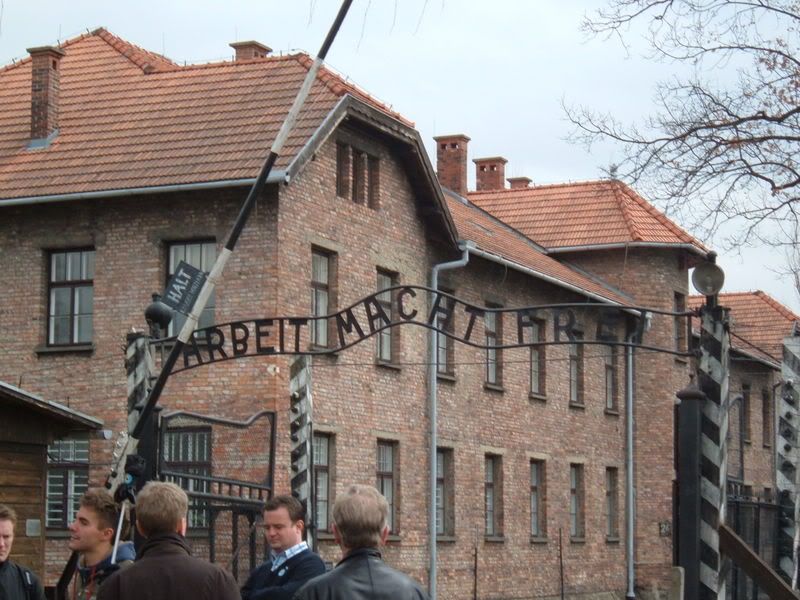
The gate at Auschwitz I...translates basically as "Work makes you free", which you probably all know. You can see some of the larger barracks behind.
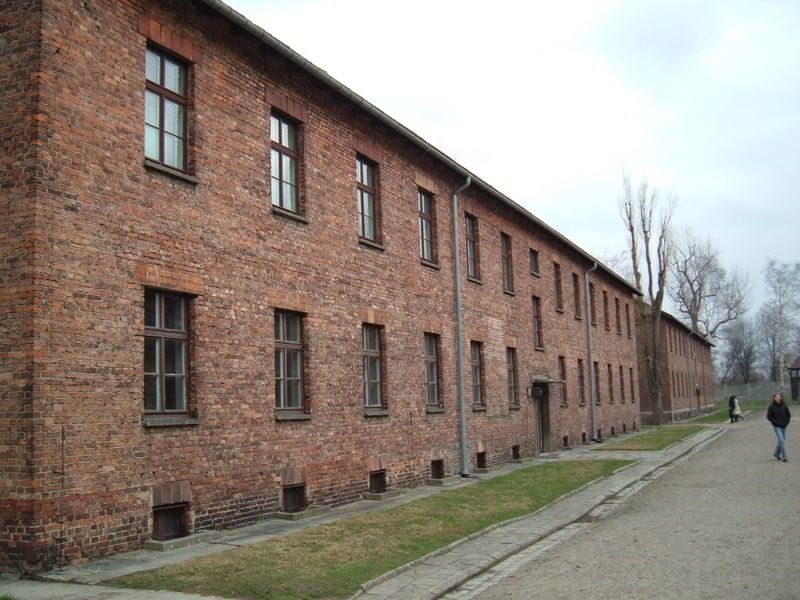
Looking down at a couple of the barracks buildings. Auschwitz I was not built by the Nazis, and doesn't have the stereotypical wooden barracks that people tend to think of - those are at Birkenau. The barracks here all already existed when the Nazis took over.
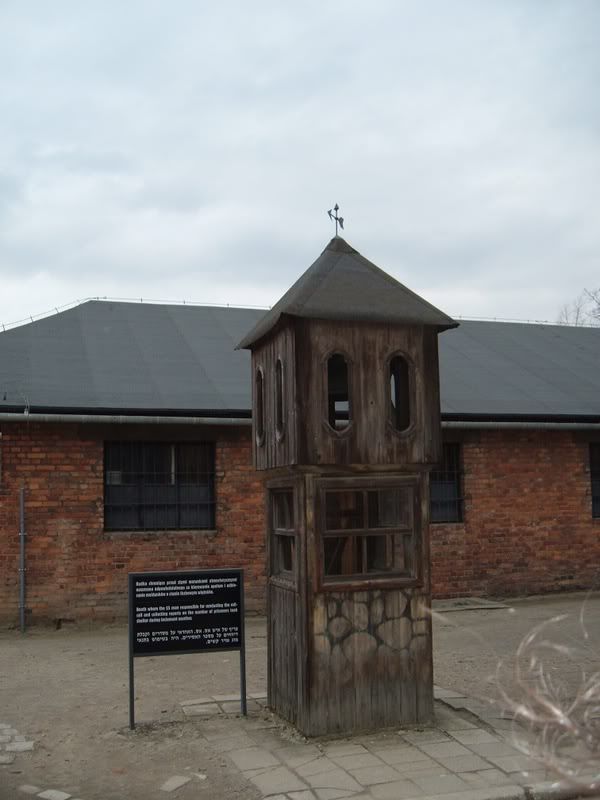
One of the small wooden guard towers. This one is at the end of the yard where the roll call was held.
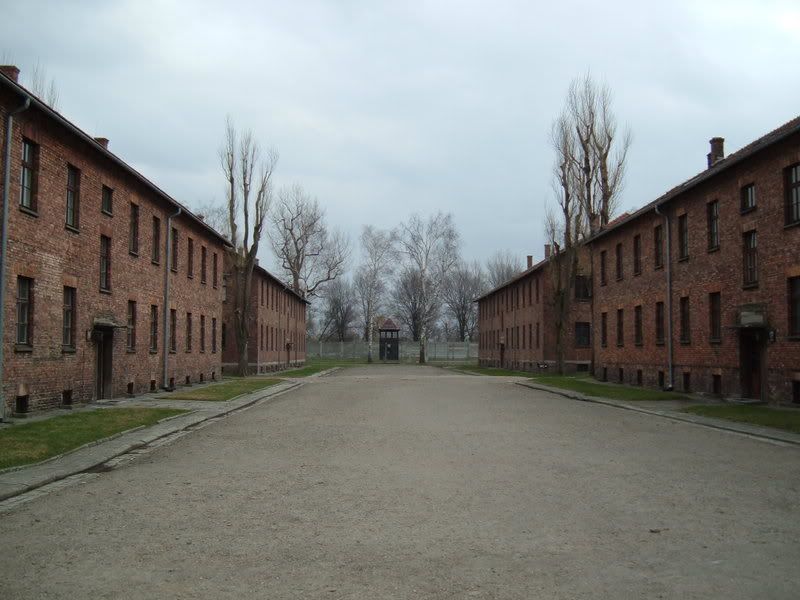
The yard where roll call was held, with barracks on each side. Down at the end you can see the fence, which was electrified, and another guard tower just to the other side of it.
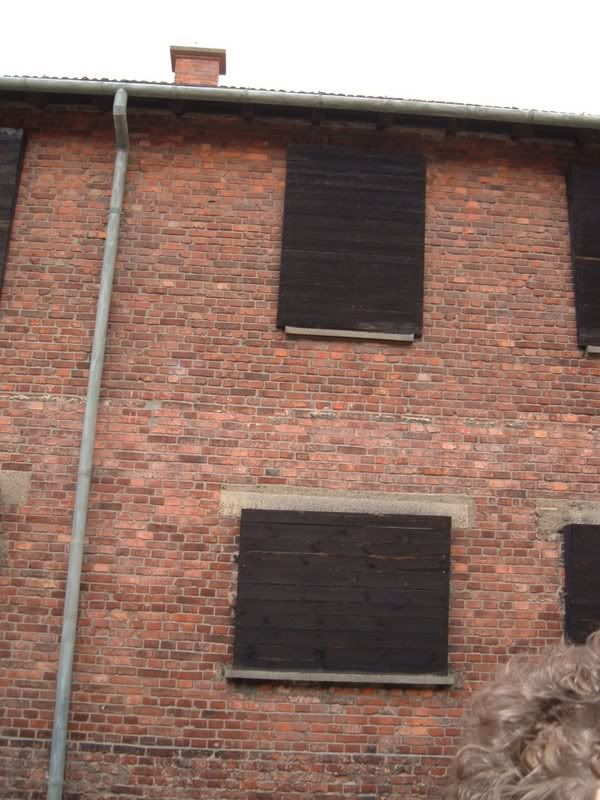
The windows on block 10. Here fertility experiments were carried out on women - trying to find effective sterilisation techniques. The windows are boarded as this block is next to the execution wall, which they did not want prisoners to see.
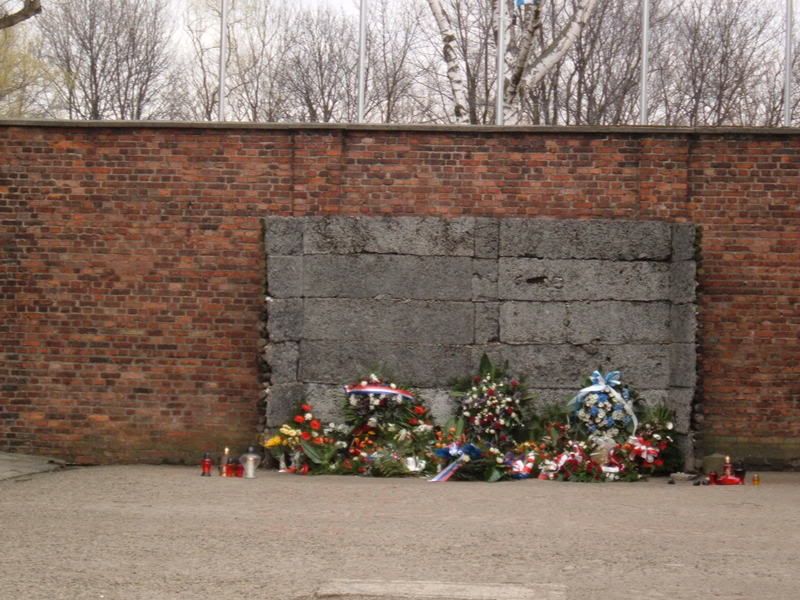
Execution wall itself. Prisoners were taken here (often from block 11, the "block of death") and killed by a single shot to the head. Bodies would then simply be piled to the side until later other prisoners would be forced to dispose of them. At times there would be towers of bodies to both sides of the wall. The gravel right in front of the wall would be changed after each execution to hide the large pools of blood that formed.

Block 11, or the "block of death". This is on the other side of the execution wall, where most of the prisoners inside would be killed. In the basement were the worst cells - starvation cells, dark cells, and standing cells. The names are pretty self-explanatory.
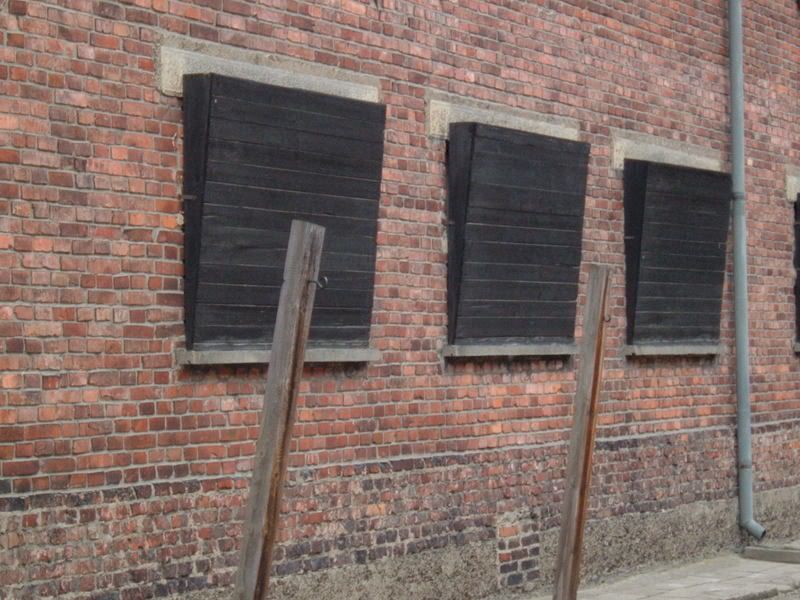
This is in the same area as the execution wall - that's block 10 you can see the windows of. Prisoners were hung by their arms from those hooks on the posts. The angle meant they were unable to touch the ground. Their shoulders would therefore become dislocated. When the guards decided their punishment was done (length would vary), they would still be forced to work. As they would be unable to, they were likely to be shot.
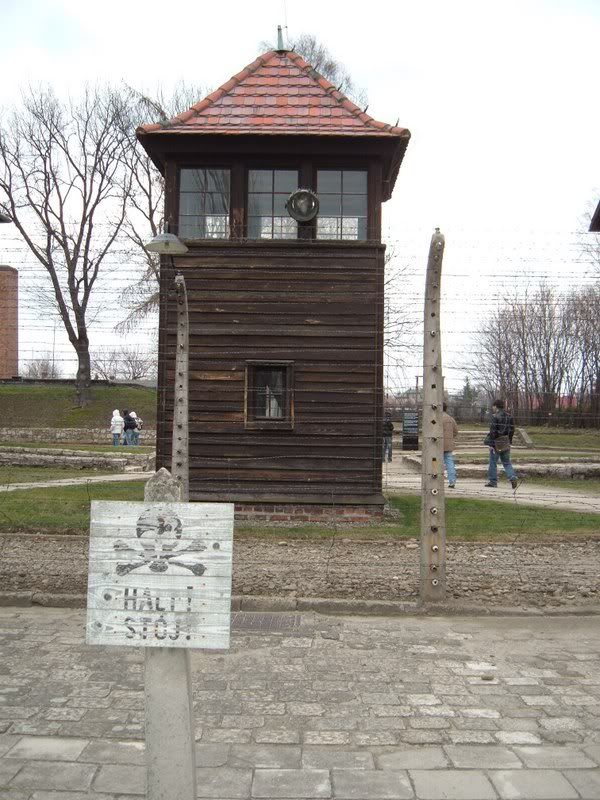
This is the fence that separated the prisoners' and guards' areas of Auschwitz I. Just on the left side in the back you can see the chimney of the crematorium.
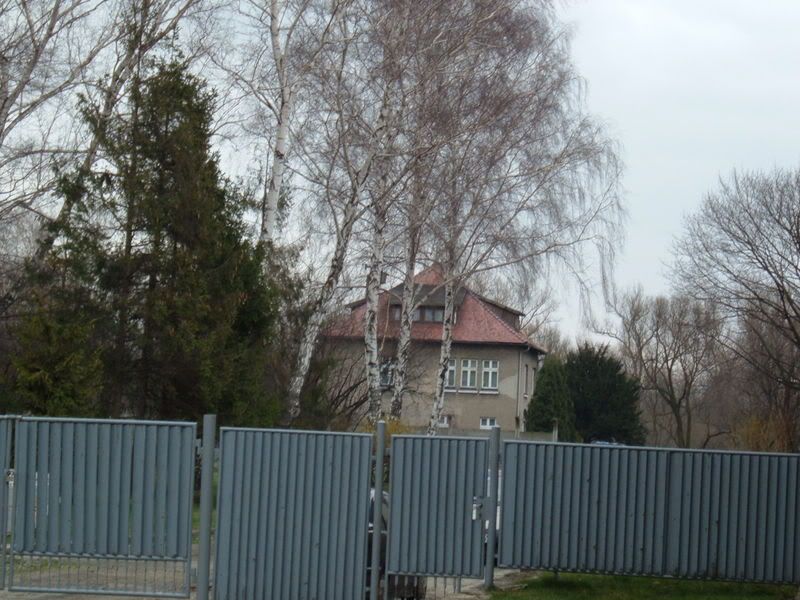
Behind the fence is the commandant's villa. The photo was taken not far from the guard tower shown in the last one, so you can see how close it really is to the main camp.
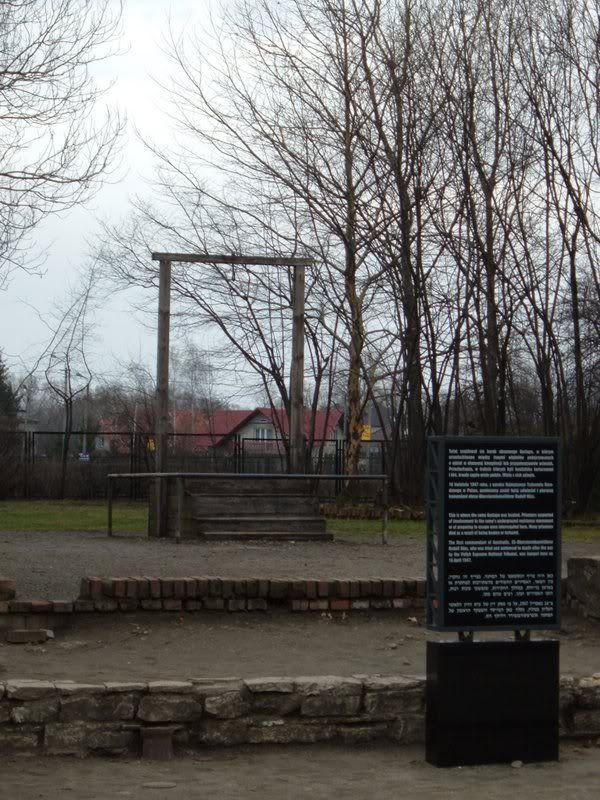
And here are the gallows where he was hung. You can't tell in the photograph, but to the left is the gas chamber and crematorium, and to the right is his villa (roughly the distance away it was in the last photo - they were taken from about the same place).
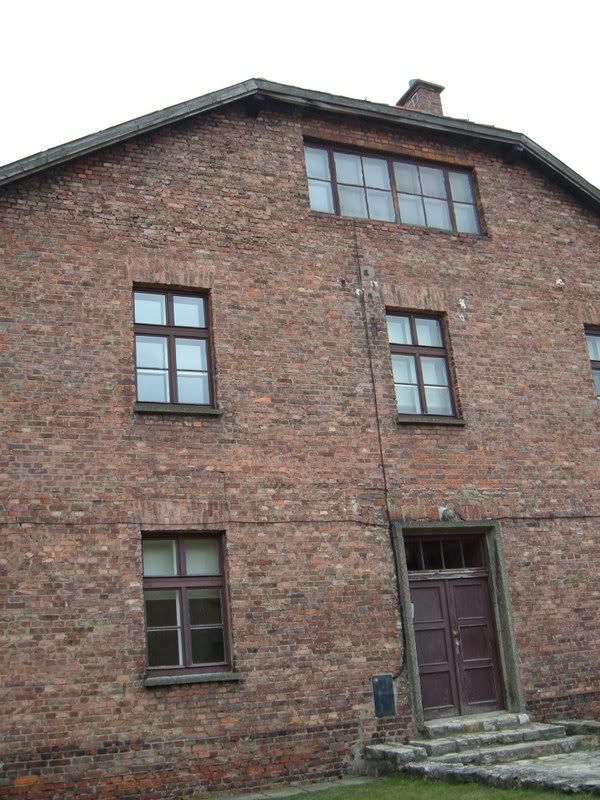
Some of the guards' barracks. Located in the same area as the last photographs, very near to the gas chamber and crematorium.
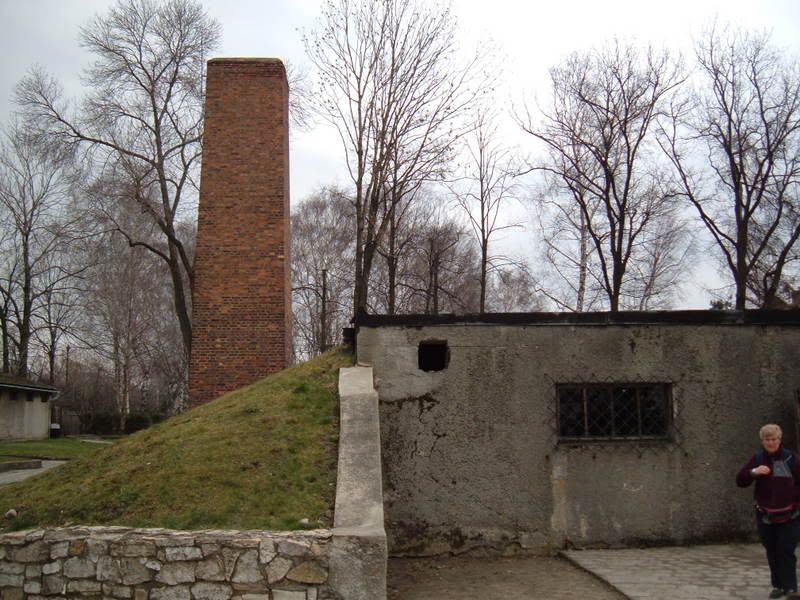
Gas chamber and crematorium. Not much I can say about it. When we went in, there were maybe 50 people, tops, and it felt claustrophobic. The Nazis put 700 Jews in at a time. I have no pictures of the inside for obvious reasons. Even if we had been allowed to take photos, it would have felt terribly insensitive to do so.
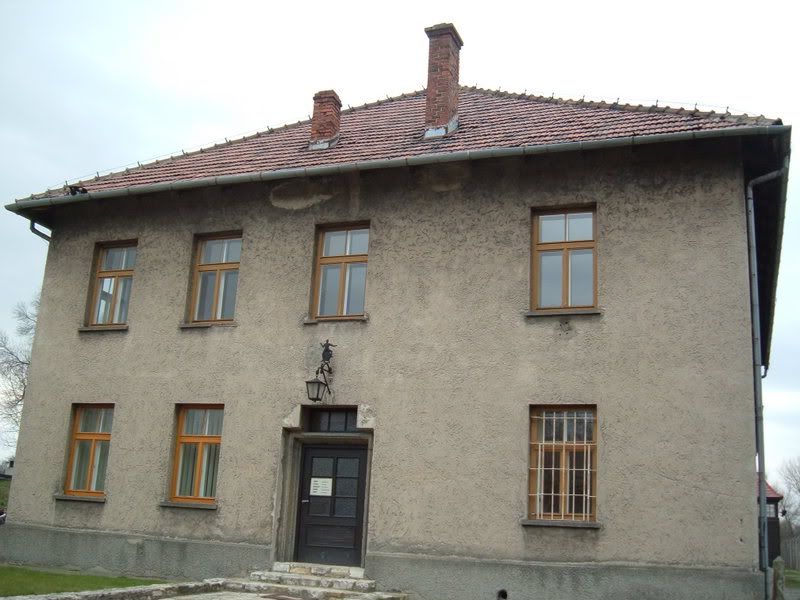
The guards' hospital and pub. If you look on the right you can see the fence and guard tower from a few pictures up.
Now onto Birkenau...
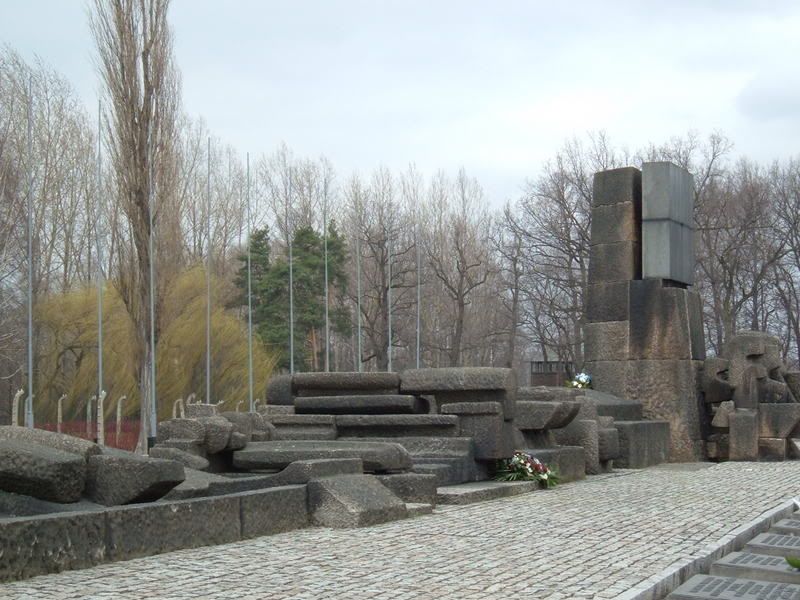
Part of the memorial. I couldn't get the whole thing into one photo, but it gives you a sense of it.
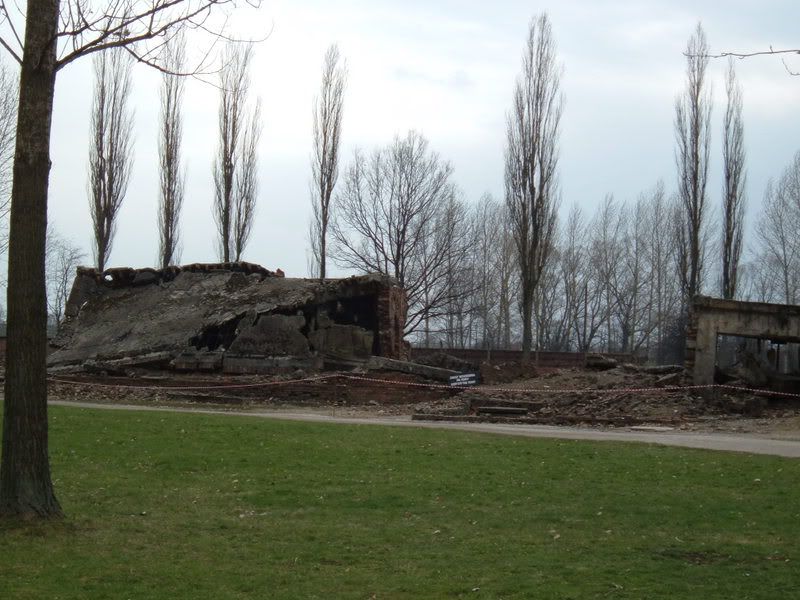
The remains of one of the crematoria. None of the ones at Birkenau are standing, the Nazis destroyed them all near the end of the war to try to hide their crimes. These were the purpose built ones, able to kill thousands at once.
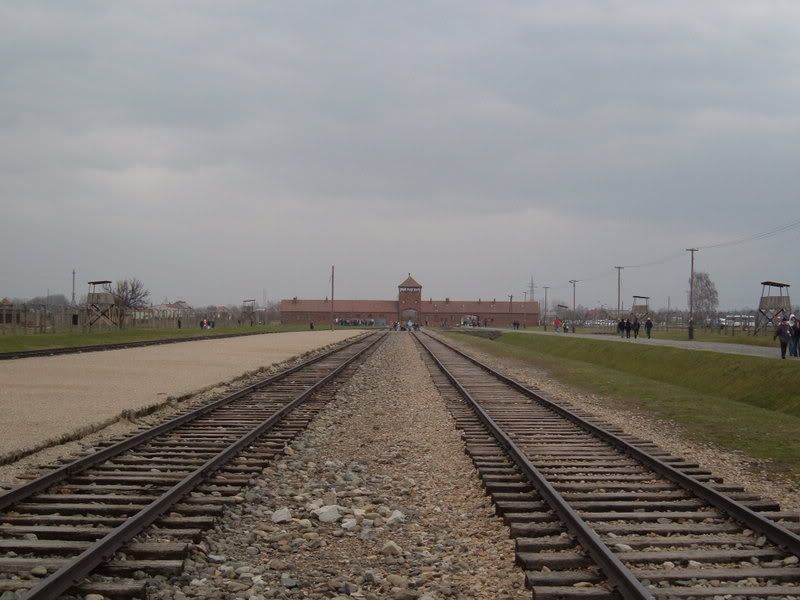
A view down the railway tracks to the main watchtower.
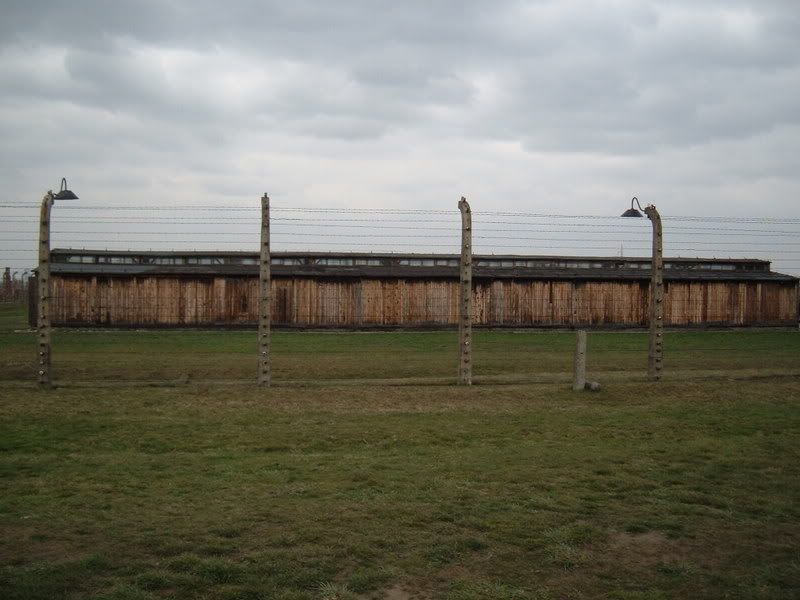
One of the wooden barracks.
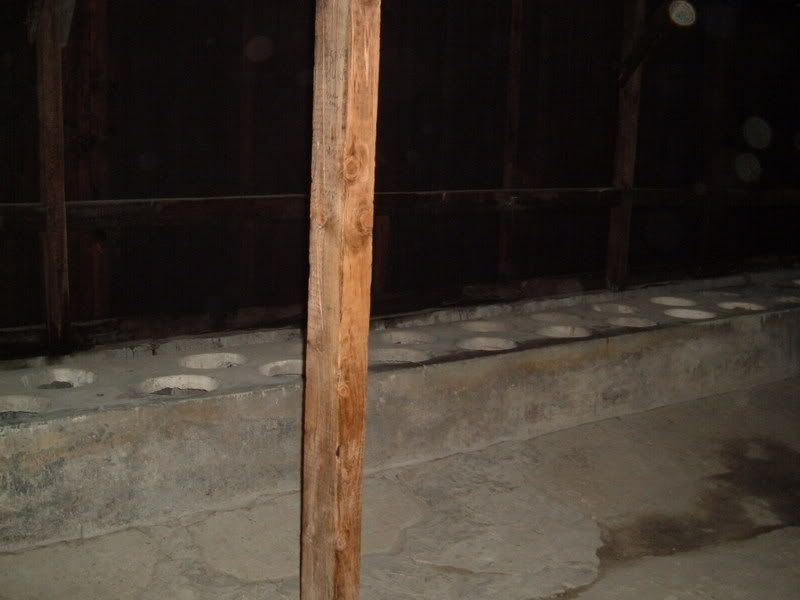
The toilets in one of the wooden barracks at Birkenau. Prisoners were allowed to use them only twice a day for 30 seconds each time. They were not in every barrack.
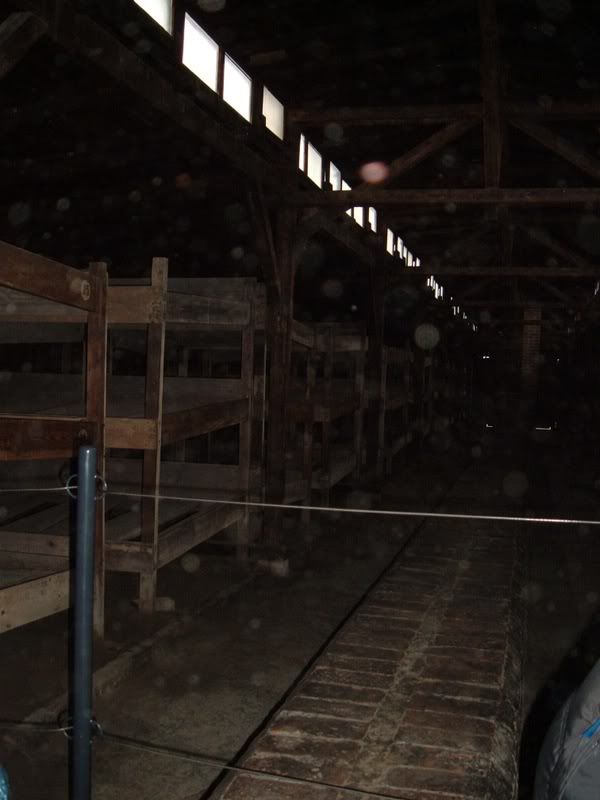
Some of the bunks in one of the wooden barracks.
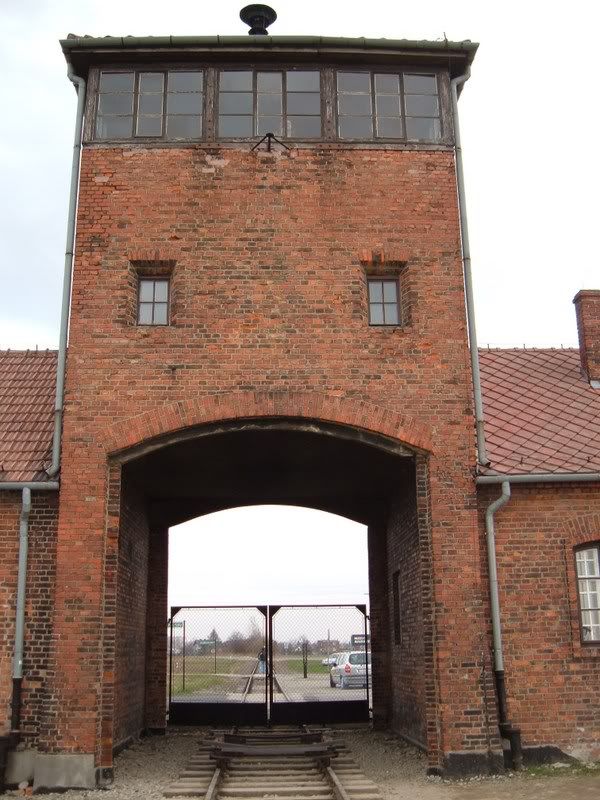
The watchtower at Birkenau.
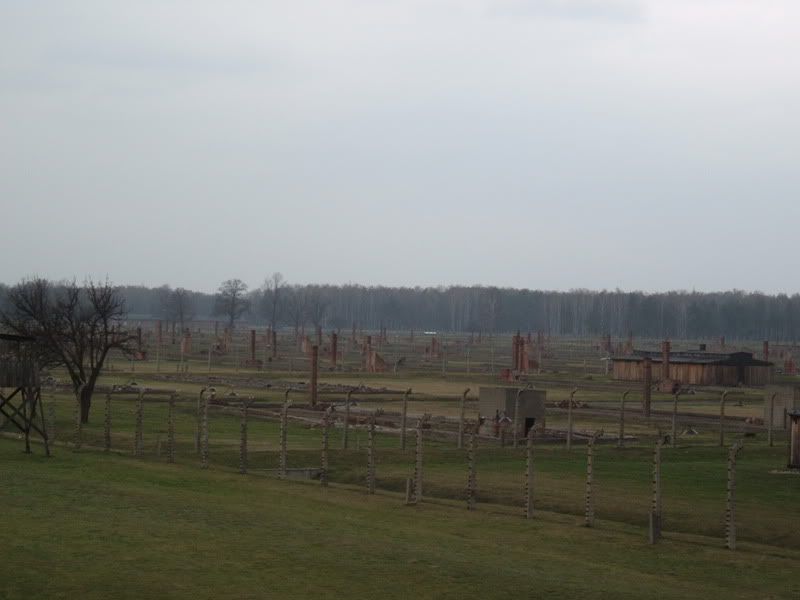
A view of the remains of the barracks from the watchtower. The Nazis burned down the majority of the wooden barracks near the end of the war - the chimneys are all that remain. This doesn't show anything of the actual scale, though. There were basically chimneys as far as the eye could see.
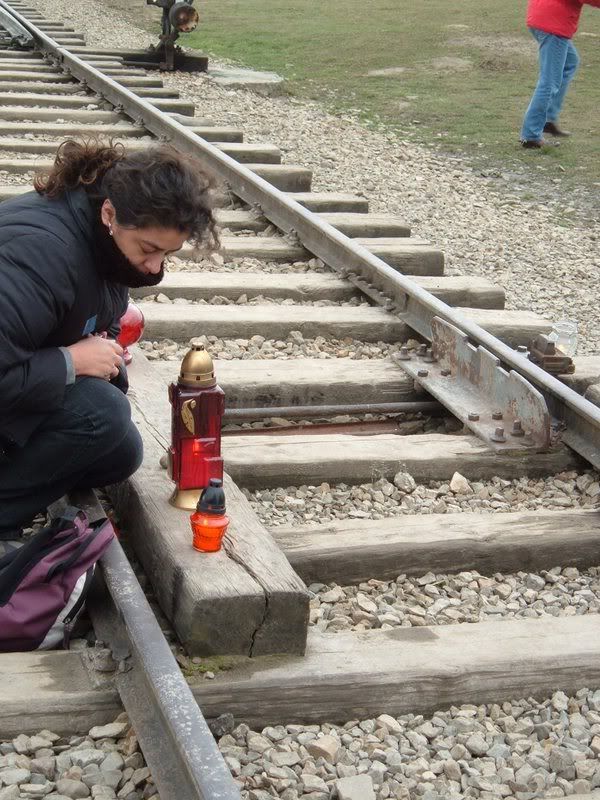
Zara, one of the group leaders who was Jewish, praying over the candle she lit on the tracks at Birkenau.
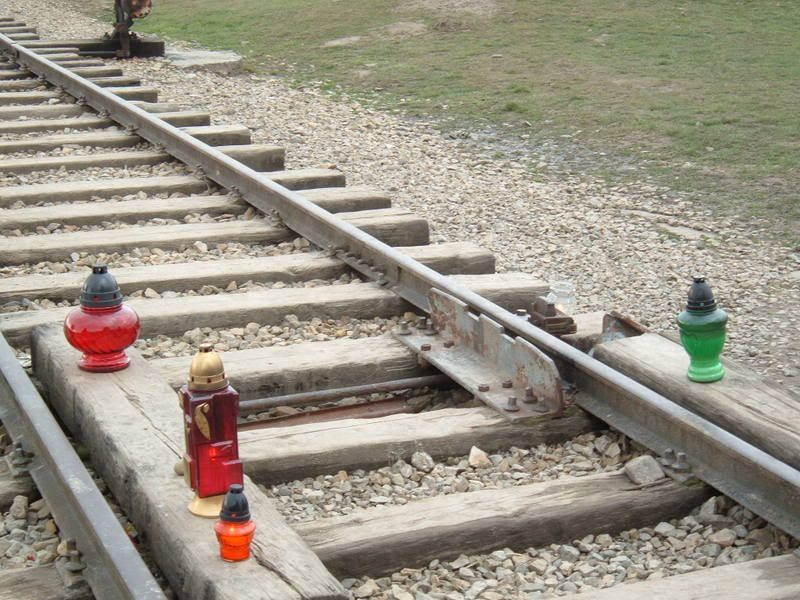
Zara's and other candles on the railway tracks at Birkenau. This is just past the watchtower.
That's a fairly small selection of the photographs I have, as I already said. I do think they give some idea of what it was like, but there's so much more...some things that I wasn't allowed to take photographs of, such as the display of 2 tons of human hair (only a fraction of what was found) or the cells in block 11. Then there are just some things that can't be captured by a camera, that you just have to be there to really see and get any sense of. Hope I've not sent you all into any kind of manic depression, but I think this all really should be seen. I'm leaving this entry public because of that.
Our guide was really good, I think. Some people didn't like her, because they thought she didn't seem to care. I think she was just trying to show us Auschwitz from a view we might not have considered otherwise - the way the Nazis viewed it, and just the logistics of it all. Her being more matter of fact about it also helped to take it in more, rather than simply becoming too emotional.
I'll cut the pictures, but honestly, I think you should all look. They convey only a tiny fraction of what it was like to actually be there, and cannot at all show the scale of it all (but neither could actually being there, to be honest), but I think it's something we should all have an awareness of.

The gate at Auschwitz I...translates basically as "Work makes you free", which you probably all know. You can see some of the larger barracks behind.

Looking down at a couple of the barracks buildings. Auschwitz I was not built by the Nazis, and doesn't have the stereotypical wooden barracks that people tend to think of - those are at Birkenau. The barracks here all already existed when the Nazis took over.

One of the small wooden guard towers. This one is at the end of the yard where the roll call was held.

The yard where roll call was held, with barracks on each side. Down at the end you can see the fence, which was electrified, and another guard tower just to the other side of it.

The windows on block 10. Here fertility experiments were carried out on women - trying to find effective sterilisation techniques. The windows are boarded as this block is next to the execution wall, which they did not want prisoners to see.

Execution wall itself. Prisoners were taken here (often from block 11, the "block of death") and killed by a single shot to the head. Bodies would then simply be piled to the side until later other prisoners would be forced to dispose of them. At times there would be towers of bodies to both sides of the wall. The gravel right in front of the wall would be changed after each execution to hide the large pools of blood that formed.

Block 11, or the "block of death". This is on the other side of the execution wall, where most of the prisoners inside would be killed. In the basement were the worst cells - starvation cells, dark cells, and standing cells. The names are pretty self-explanatory.

This is in the same area as the execution wall - that's block 10 you can see the windows of. Prisoners were hung by their arms from those hooks on the posts. The angle meant they were unable to touch the ground. Their shoulders would therefore become dislocated. When the guards decided their punishment was done (length would vary), they would still be forced to work. As they would be unable to, they were likely to be shot.

This is the fence that separated the prisoners' and guards' areas of Auschwitz I. Just on the left side in the back you can see the chimney of the crematorium.

Behind the fence is the commandant's villa. The photo was taken not far from the guard tower shown in the last one, so you can see how close it really is to the main camp.

And here are the gallows where he was hung. You can't tell in the photograph, but to the left is the gas chamber and crematorium, and to the right is his villa (roughly the distance away it was in the last photo - they were taken from about the same place).

Some of the guards' barracks. Located in the same area as the last photographs, very near to the gas chamber and crematorium.

Gas chamber and crematorium. Not much I can say about it. When we went in, there were maybe 50 people, tops, and it felt claustrophobic. The Nazis put 700 Jews in at a time. I have no pictures of the inside for obvious reasons. Even if we had been allowed to take photos, it would have felt terribly insensitive to do so.

The guards' hospital and pub. If you look on the right you can see the fence and guard tower from a few pictures up.
Now onto Birkenau...

Part of the memorial. I couldn't get the whole thing into one photo, but it gives you a sense of it.

The remains of one of the crematoria. None of the ones at Birkenau are standing, the Nazis destroyed them all near the end of the war to try to hide their crimes. These were the purpose built ones, able to kill thousands at once.

A view down the railway tracks to the main watchtower.

One of the wooden barracks.

The toilets in one of the wooden barracks at Birkenau. Prisoners were allowed to use them only twice a day for 30 seconds each time. They were not in every barrack.

Some of the bunks in one of the wooden barracks.

The watchtower at Birkenau.

A view of the remains of the barracks from the watchtower. The Nazis burned down the majority of the wooden barracks near the end of the war - the chimneys are all that remain. This doesn't show anything of the actual scale, though. There were basically chimneys as far as the eye could see.

Zara, one of the group leaders who was Jewish, praying over the candle she lit on the tracks at Birkenau.

Zara's and other candles on the railway tracks at Birkenau. This is just past the watchtower.
That's a fairly small selection of the photographs I have, as I already said. I do think they give some idea of what it was like, but there's so much more...some things that I wasn't allowed to take photographs of, such as the display of 2 tons of human hair (only a fraction of what was found) or the cells in block 11. Then there are just some things that can't be captured by a camera, that you just have to be there to really see and get any sense of. Hope I've not sent you all into any kind of manic depression, but I think this all really should be seen. I'm leaving this entry public because of that.